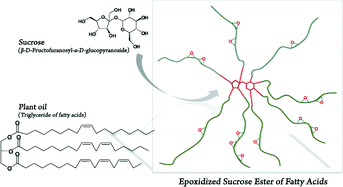Novel biobased epoxy compounds: epoxidized sucrose esters of fatty acids
Abstract
Novel biobased high functionality epoxy resins were synthesized by the epoxidation of sucrose ester resins of vegetable oil

* Corresponding authors
a Department of Coatings and Polymeric Materials, North Dakota State University, Fargo, United States
Novel biobased high functionality epoxy resins were synthesized by the epoxidation of sucrose ester resins of vegetable oil

 Please wait while we load your content...
Something went wrong. Try again?
Please wait while we load your content...
Something went wrong. Try again?
X. Pan, P. Sengupta and D. C. Webster, Green Chem., 2011, 13, 965 DOI: 10.1039/C0GC00882F
To request permission to reproduce material from this article, please go to the Copyright Clearance Center request page.
If you are an author contributing to an RSC publication, you do not need to request permission provided correct acknowledgement is given.
If you are the author of this article, you do not need to request permission to reproduce figures and diagrams provided correct acknowledgement is given. If you want to reproduce the whole article in a third-party publication (excluding your thesis/dissertation for which permission is not required) please go to the Copyright Clearance Center request page.
Read more about how to correctly acknowledge RSC content.
 Fetching data from CrossRef.
Fetching data from CrossRef.
This may take some time to load.
Loading related content
